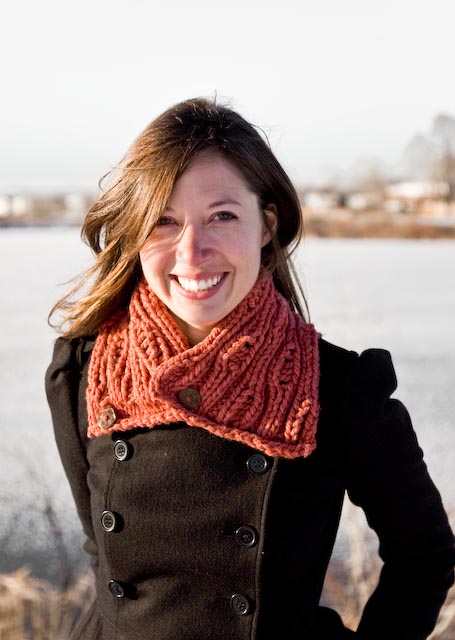
Illustrator
Publications
2014
[Bibtex]
@MISC {Kingman14GenomeMaking,
author = "Pina Kingman",
title = "Our Resilient Genome: The Making of a Science Film",
howpublished = "Presentation in the EG VCBM workshop 2014",
month = "September",
year = "2014",
abstract = "Every single human cell has to fix 10,000 to 20,000 lesions in its DNA every day. Our cells are constantly exposed to many different types of threats that damage our genome. These lesions could cause mutations in our DNA, potentially leading to cancer and other diseases. With such continuous onslaught, how can our cells possibly protect our DNA from damage and mutations? This presentation will showcase the first public screening of a short film about DNA repair, which blends computer graphics and biology to communicate exciting up-and-coming research. This film was developed in conjunction with the Department of Informatics and the Department of Molecular Biology at the University of Bergen, and the Institute of Computer Graphics and Algorithms at the Vienna University of Technology. Along with a discussion on the visualisation process, I will also talk about the intersection between film and science that helps us communicate complex information.",
images = "images/no_thumb.png",
thumbnails = "images/no_thumb.png",
location = "Wien, Austria",
project = "physioillustration"
} [Bibtex]
@MISC {Kingman14Integrating,
author = "Pina Kingman and Anne-Kristin Stavrum and Ivan Viola and Helwig Hauser",
title = "Integrating 2D and 3D Animation to Comprehensively Communicate Biology",
howpublished = "Poster presented at the VizBi conference 2014",
month = "March",
year = "2014",
abstract = "As research in cellular and molecular biology advances, so does the need to educated both the science research community and the general public. The former must be aware of developments in associated fields, the latter must be able to take responsibility for their own well-being. In both cases, we have a willing and capable audience, ready to delve deeper into the biological sciences. To exploit this opportunity, we need to research new and advanced visual language techniques to further improve communication. We are therefore investigating novel visual communication techniques to advance knowledge translation methods, focusing on effectively communicating abstract functional aspects of biological systems. To this end, we are creating several short animations, each one exploring different design solutions. These design solutions incorporate 2D motion graphics, information visualization, 3D animation, and can be applied to any biological story. In addition to our short animations, this research will culminate in a short film describing NAD-dependent DNA Repair, intended for the general public and researchers interested in these molecular systems.",
images = "images/Kingman13Integrating.png",
thumbnails = "images/Kingman13Integrating_thumb.jpg",
location = "Heidelberg, Germany",
project = "physioillustration"
} [Bibtex]
@MISC {Kingman14ResilientGenome,
author = "Pina Kingman",
title = "Our Resilient Genome",
howpublished = "Talk in the Forshkningsdagene UNG 2014",
month = "September",
year = "2014",
abstract = "Motivation: Make science research accessible to the public through film. Inspire and instil an interest in science and molecular biology. Story: The short animated film will describe the molecular pathways involved in single strand break DNA repair. Every single human cell has to repair an estimated 10,000-20,000 DNA lesion every day. DNA is constantly exposed to a variety of genotoxic events, leading to many different types of lesions. If the damage is not repaired, these lesions may lead to mutations that in turn lead to cancer and ageing. Your cells, however, have fine tuned mechanisms that maintain the integrity of our genome. This film describes one of those mechanisms. Length: About 3 minutes. Audience: We are aiming for the type of person who would attend a science film festival. We are thus assuming an interest in biology and medicine, at least a high-school degree (with the high probability of intending to continue to higher education), and a basic understanding of biology. Timeline: The film is currently in production and will be finished mid/late summer.",
images = "images/no_thumb.png",
thumbnails = "images/no_thumb.png",
location = "Bergen, Norway",
project = "physioillustration"
} [Bibtex]
@MISC {Kingman14PARP1,
author = "Pina Kingman and Anne-Kristin Stavrum and Ivan Viola and Helwig Hauser",
title = "PARP-1 Binds Damaged DNA",
howpublished = "Poster presented at the VizBi conference 2014",
month = "March",
year = "2014",
abstract = "This image is an excerpt from the animation entitled Negative charge and poly(ADP)-ribosylation: a scientific animation. The molecules where uploaded from the Protein Data Bank using the Embedded Python Molecular Viewer plug-in for Autodesk Maya (Johnson et al. 2001; Sanner et al. 1996). The scene was rendered using Maxon Cinema 4D and composited in Adobe Photoshop. Subsurface Scattering was chosen to give the molecules a translucent appearance. Two PARP-1 molecules are shown bound to damaged DNA (Coquelle and Glover 2012). This work has been carried out within the PhysioIllustration project (funded by NFR, project #218023).",
images = "images/Kingman13PARP1.jpg",
thumbnails = "images/Kingman13PARP1_thumb.jpg",
location = "Heidelberg, Germany",
project = "physioillustration"
}2013
[Bibtex]
@MISC {Kingman13ScienceFilm,
author = "Pina Kingman",
title = "Animating Biology: The making of a science film",
howpublished = "Presentation in the VisBio 2013",
month = "September",
year = "2013",
abstract = "Biology is complicated. Understanding cellular and molecular biology is particularly difficult. Amongst the many effective communication tools at our disposal, animated film is at the forefront. Animation brings biological stories to life, and thus aids in our understanding of biological structure and function. Whether used to inform patients, to teach undergraduate biology, or to disseminate advances in research, animated film is a tool worth employing. But what goes into an animation? I will explain the step-by-step process of creating animations and show a lot of inspiring examples.",
images = "images/no_thumb.png",
thumbnails = "images/no_thumb.png",
location = "Bergen, Norway",
project = "physioillustration"
}